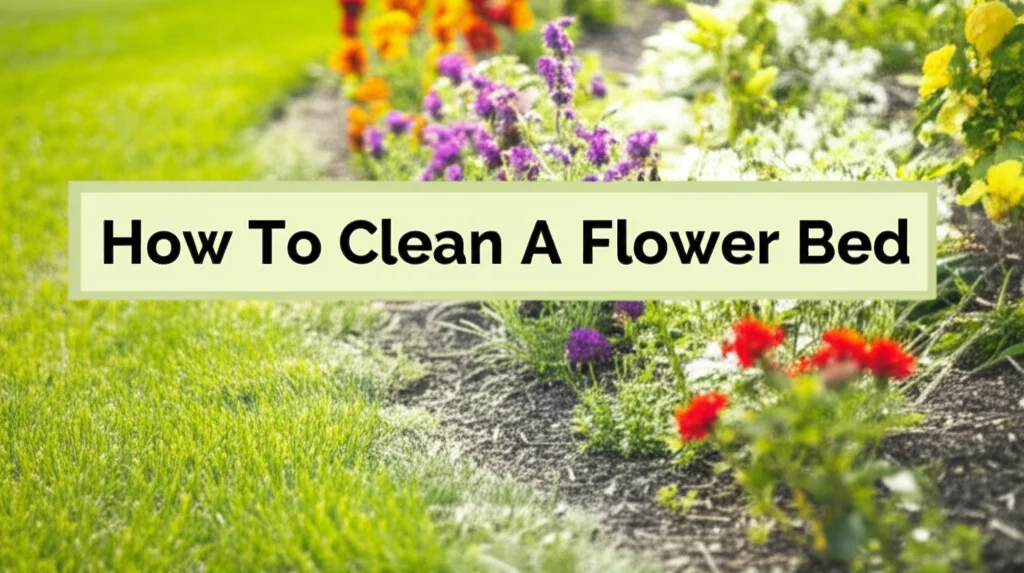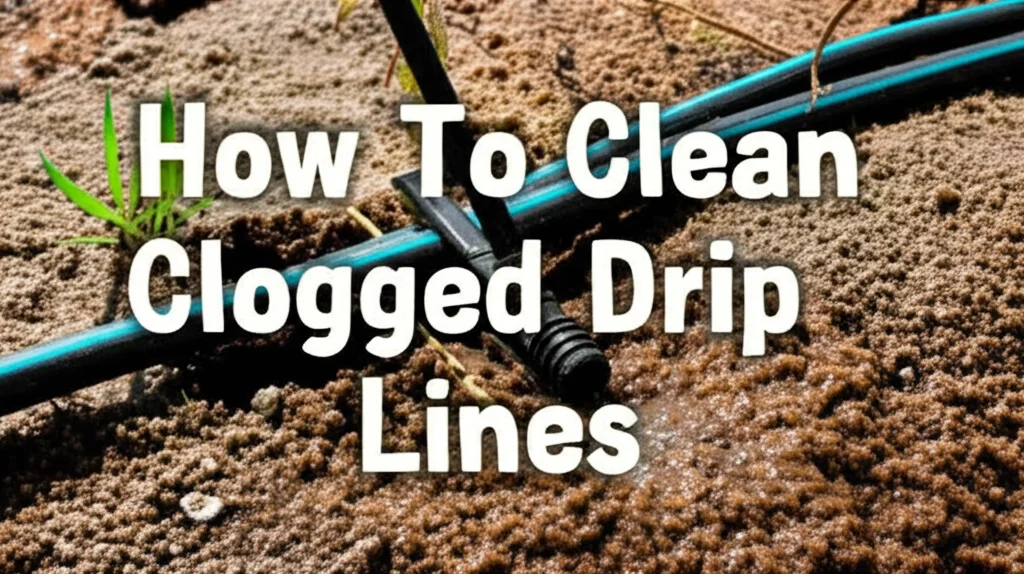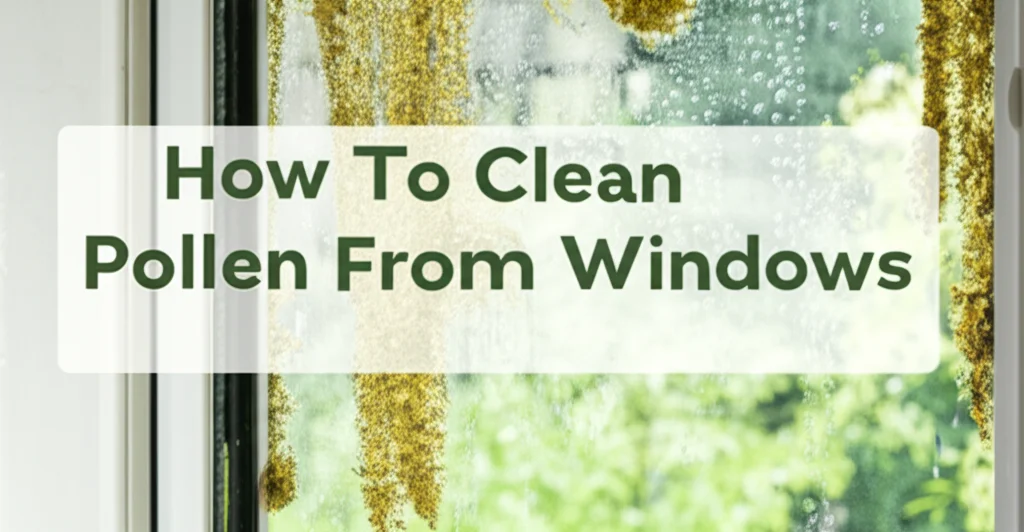· Gardening · 7 min read
How To Clean A Flower Bed

Revitalize Your Blooms: How To Clean A Flower Bed
Is your flower bed looking a little tired after the winter months? A clean flower bed is the first step to a thriving garden. This guide will walk you through everything you need to know about how to clean a flower bed, from removing weeds and debris to preparing the soil for new growth.
We’ll cover the tools you’ll need, step-by-step instructions, and tips for maintaining a beautiful, healthy garden all season long. Let’s get started and bring your flower bed back to life!
Takeaway:
- Remove all weeds, including roots.
- Clear away dead leaves, stems, and other debris.
- Amend the soil with compost or other organic matter.
- Mulch to suppress weeds and retain moisture.
What does it mean to clean a flower bed?
Cleaning a flower bed involves removing unwanted plants (weeds), dead plant material, and debris to create a healthy environment for your flowers to flourish. This process prepares the soil, improves drainage, and allows for better air circulation, ultimately leading to more vibrant blooms.
1. Gathering Your Tools for Flower Bed Cleaning
Before you begin, having the right tools will make the job much easier. You don’t need a garage full of equipment, but a few key items are essential. Think of it like prepping for a painting project – the right brushes make all the difference! Here’s what you’ll need to effectively clean your flower bed:
- Gardening Gloves: Protect your hands from dirt, thorns, and potential irritants.
- Hand Trowel: Ideal for digging out weeds and loosening soil.
- Gardening Fork: Useful for turning and aerating the soil.
- Weeding Tool: A specialized tool for removing weeds by the root. There are many types available, so choose one that feels comfortable in your hand.
- Garden Rake: For gathering leaves, debris, and smoothing the soil surface.
- Pruning Shears: To trim dead or damaged stems and foliage.
- Wheelbarrow or Garden Bags: For hauling away debris.
- Compost or Soil Amendment: To enrich the soil after cleaning.
2. Removing Weeds: The First Step to a Beautiful Bed
Weeds compete with your flowers for nutrients, water, and sunlight. Removing them is crucial for a healthy flower bed. Don’t just pull off the tops; you need to get the roots! Here’s how to tackle those pesky weeds:
- Hand Pulling: For smaller weeds, hand pulling is often the most effective method. Grasp the weed as close to the base as possible and gently pull, trying to remove the entire root system.
- Using a Weeding Tool: For weeds with deep roots, a weeding tool can be a lifesaver. Insert the tool around the base of the weed and use it to loosen the soil and lift the weed out.
- Addressing Persistent Weeds: Some weeds, like bindweed or quackgrass, are notoriously difficult to remove. Repeated pulling or the use of a targeted herbicide may be necessary. Consider using a natural herbicide option if you prefer.
- Preventing Weed Seeds: After removing weeds, consider applying a pre-emergent herbicide to prevent new weed seeds from germinating.
3. Clearing Debris: Leaves, Stems, and More
Once the weeds are gone, it’s time to remove any dead leaves, spent flower stems, and other debris. This debris can harbor pests and diseases, and it also prevents sunlight and air from reaching the soil. A tidy bed is a happy bed!
- Removing Dead Plant Material: Cut back any dead or damaged stems and foliage using pruning shears. Dispose of this material properly – don’t compost diseased plants.
- Raking Up Leaves and Twigs: Use a garden rake to gather up leaves, twigs, and other debris.
- Removing Rocks and Other Objects: Remove any rocks, stones, or other objects that may be hindering plant growth.
- Dealing with Old Mulch: If you used mulch last season, remove any that has broken down or become matted. Old mulch can also harbor pests and diseases. You can compost it if it’s in good condition.
4. Soil Preparation: Feeding Your Flowers
After removing weeds and debris, it’s time to prepare the soil for planting. Healthy soil is the foundation of a thriving flower bed. Think of it as giving your flowers a nutritious meal!
- Loosening the Soil: Use a gardening fork to loosen the soil to a depth of about 6-8 inches. This will improve drainage and aeration.
- Amending the Soil: Add compost or other organic matter to the soil. Compost provides essential nutrients and improves soil structure. You can also use well-rotted manure or peat moss.
- Testing Soil pH: Consider testing your soil pH to ensure it’s suitable for the flowers you plan to grow. Most flowers prefer a slightly acidic pH of around 6.0-7.0. You can adjust the pH by adding lime (to raise it) or sulfur (to lower it).
- Fertilizing (Optional): If your soil is lacking in nutrients, you can add a balanced fertilizer. Follow the instructions on the fertilizer package carefully. If you’ve added plenty of compost, you may not need to fertilize.
5. Mulching: Protecting and Beautifying Your Bed
Mulching is a fantastic way to finish cleaning your flower bed. It helps retain moisture, suppress weeds, and regulate soil temperature. Plus, it looks great! It’s like adding a finishing touch to a beautifully decorated room.
- Choosing a Mulch: There are many different types of mulch available, including wood chips, shredded bark, straw, and compost. Choose a mulch that is appropriate for your flowers and your aesthetic preferences. Consider using https://beacleaner.com/how-to-clean-linoleum-floors-with-ground-in-dirt/ to ensure your outdoor spaces are as clean as your indoor ones.
- Applying Mulch: Spread a 2-3 inch layer of mulch evenly over the flower bed. Keep the mulch a few inches away from the stems of your plants to prevent rot.
- Benefits of Mulch: Mulch helps to conserve water, suppress weeds, regulate soil temperature, and add organic matter to the soil as it decomposes.
- Renewing Mulch: Replenish the mulch as needed throughout the growing season.
6. Preventing Future Messes: Ongoing Maintenance
Cleaning your flower bed isn’t a one-time task. Regular maintenance will help keep it looking its best. A little effort now will save you a lot of work later!
- Regular Weeding: Pull weeds as soon as you see them to prevent them from becoming established.
- Deadheading: Remove spent flower blooms to encourage more flowering.
- Watering: Water your flowers regularly, especially during dry spells.
- Fertilizing: Fertilize your flowers as needed to provide them with the nutrients they need to thrive.
- Monitoring for Pests and Diseases: Inspect your plants regularly for signs of pests or diseases. Address any problems promptly. If you’re dealing with indoor messes, remember that https://beacleaner.com/how-to-clean-hardwood-floors-with-vinegar/ can help with those too!
FAQ: Your Flower Bed Cleaning Questions Answered
Q: How often should I clean my flower bed?
A: Ideally, you should do a thorough cleaning in the spring and fall. However, regular weeding and deadheading throughout the growing season will help keep your flower bed looking its best.
Q: What’s the best way to get rid of stubborn weeds?
A: For persistent weeds, try using a weeding tool to remove the entire root system. You may also need to use a targeted herbicide or repeat the pulling process several times.
Q: What kind of mulch is best for a flower bed?
A: The best type of mulch depends on your preferences and the needs of your flowers. Wood chips and shredded bark are popular choices, but straw and compost can also be effective.
Q: How can I prevent weeds from growing in my flower bed?
A: Mulching is a great way to suppress weeds. You can also use a pre-emergent herbicide to prevent weed seeds from germinating.
Q: Is it okay to compost diseased plant material?
A: No, it’s not recommended to compost diseased plant material, as this can spread the disease to other plants. Dispose of it properly instead.
Conclusion: Enjoy Your Beautiful, Clean Flower Bed!
Cleaning a flower bed is a rewarding task that sets the stage for a beautiful and thriving garden. By following these steps – gathering your tools, removing weeds and debris, preparing the soil, and mulching – you can create a healthy environment for your flowers to flourish. Remember that regular maintenance is key to keeping your flower bed looking its best.
So, get out there, get your hands dirty, and enjoy the beauty of a clean and vibrant flower bed! And if you find yourself needing to tackle messes indoors, don’t forget resources like https://beacleaner.com/how-to-clean-a-carpet-with-a-wet-dry-vac/ to keep your whole home sparkling.




